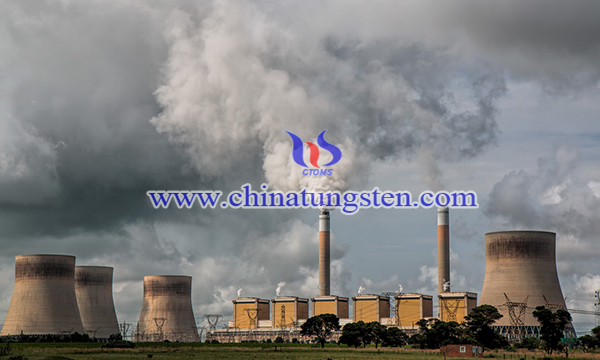WO3 Porous Nanosheet Arrays with Amazing NO2 Gas Sensing Performance
- Details
- Category: Tungsten Information
- Published on Friday, 24 September 2021 18:49
As a typical exhaust gas from industry and automobiles, nitrogen dioxide (NO2) not only causes environmental problems, but also affects the human health. Tungsten trioxide (WO3) is an n-type semiconductor oxide, which has proven to be particularly suitable for detecting NO2 gas.
Thus, researchers have introduced a preparation method of WO3 porous nanosheet arrays (PNA) and its application as a gas sensor. WO3 porous nanosheet arrays with amazing NO2 gas sensing performance have been prepared by a facile chemical bath deposition, a high response of 460 toward 10 ppm NO2 can be achieved at a working temperature of 100 °C. The synthesis process of WO3 porous nanosheet arrays is as follows:

First, 0.3 g of sodium tungstate dihydrate (Na2WO4·2H2O, purity 99.5%) was dissolved in 30 mL of deionized water under constant stirring, and then 0.6 g of citric acid monohydrate (C6H8O7·H2O, 99.5%) Purity) and 6 mL of 3 M HCl. A clear solution was obtained after stirring for 10 minutes at room temperature. Al2O3 substrates with printed Pt wires for heating and resistance measurement are used for thin film deposition. The carefully cleaned Al2O3 substrate was immersed in the above solution and allowed to deposit on the Pt interdigital area. When the temperature rises to 60 °C, the solution becomes turbid, which means that the thin film begins to grow heterogeneously on the substrate, and a light yellow precipitate is uniformly formed in the bulk solution. After growing for 2 hours at 60°C, the prepared film and powder were collected and washed with ethanol and water. WO3 PNA was obtained by annealing the prepared film in air at 400°C for 2 hours. The prepared powder was used to prepare a control sensor, and the powder was mixed with terpineol to form a uniform paste. The resulting slurry was coated on an Al2O3 substrate and subjected to the same annealing conditions as WO3 PNA to form a thick WO3 layer.

In conclusion, WO3 porous nanosheet arrays with amazing NO2 gas sensing performance at low temperature have been prepared by a facile chemical bath deposition. Due to the removal of crystal water, the nanosheets become porous after annealing of the precursor. The WO3 array is composed of ultra-thin porous nanosheets with a thickness of 20 nm, which has enhanced low-temperature NO2 gas sensing performance. At a working temperature of 100 °C, a high response of 460 toward 10 ppm NO2 can be achieved. Compared with the thick WO3 layer, the superior sensing performance of the WO3 porous nanosheet array is attributed to the high participation of the nanosheet array in the surface reaction of the gas. The temperature-dependent gas response to NO2 is explained by the competitive adsorption of oxygen and NO2 at low temperature and the desorption at high temperature.
- Tungsten Oxide Manufacturer & Supplier, Chinatungsten Online: www.tungsten-oxide.com
- Tungsten News & Prices of China Tungsten Industry Association: www.ctia.com.cn
- Molybdenum News & Price: news.molybdenum.com.cn
- Tel.: 86 592 5129696; Fax: 86 592 5129797; Email: sales@chinatungsten.com



 sales@chinatungsten.com
sales@chinatungsten.com